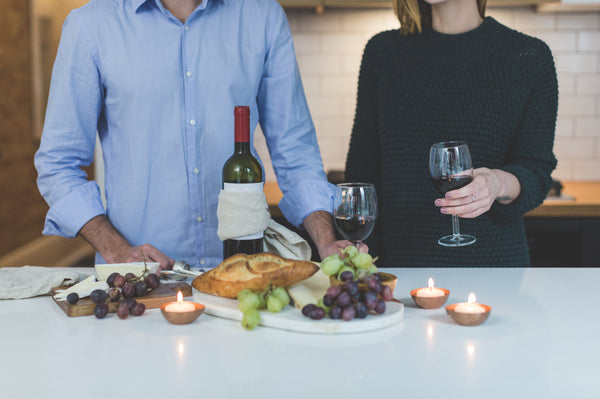Your ultimate DIY candle making guide
In this guide you will get some tips for candle making and learn which essential oils are best to get started with your scented candles.
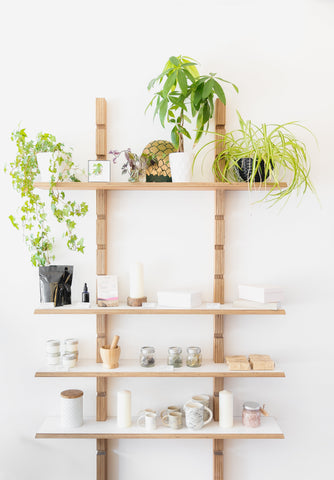
Aromatherapy through handmade candles will not only lift your mood but offer something to cherish. Candlelight can turn eating into dining, resting into meditation, and prayer into devotion. Making scented candles takes it one step further by combining a visual atmosphere with a nice fragrance.
You will learn:
- Which equipment do I need?
- Which kind of wax can I use?
- Which wicks should I use?
- What are the best essential oils to get started?
- How to mix wax and essential oils?
Which equipment do I need?
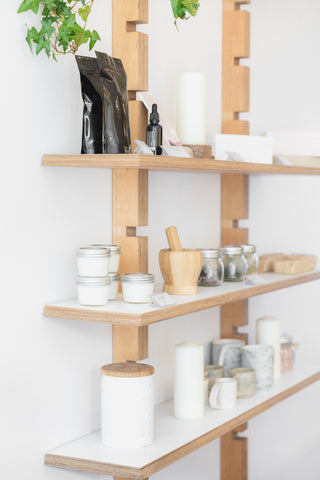
You will need to prepare some ingredients before you can start your DIY candle making project. The majority of these can be easily bought from a local craft or grocery store. And of course you will need some high quality oils which you can find in our shop.
You will need:
- Candle wax
- Candle molds
- Measuring cups or a scale
- Essential Oils
- Colors (optional)
- Thermometer
- Candle wicks
- Double boiler
- Wooden spoon or a silicone spatula
- Melting pot
Which wax should I use?
There is one general rule when making scented candles. The softer the wax, the more fragrance the candle will have. Soft wax does not seal its surface as tightly as hard wax does. This means softer waxes allow more scent to diffuse in the air around it.
Soft wax is more appropriate for container candles. Using soft wax will cause tapers, pillars, or free-standing candles to lose their shape or to collapse. Most manufacturers of candle-making supplies offer wax compounds that are designed specifically for containers or molds. This is why it is important to know which type of candle you wish to make.
Natural Waxes
- Beeswax is very popular as it burns beautifully and contains its own pleasant aroma. Beeswax is stickier than other waxes and requires a larger wick. This however may cause problems when releasing the candle from the mold. Beeswax works the best for container, dipped taper, and rolled candles.
- Plant-based waxes are coming from a variety of different origins. You can find soy wax, jojoba wax and palm wax, among others. The majority of these waxes are suitable for container candles rather than pillars or tapers.
Artificial Waxes
-
Paraffin Wax comes from synthesizing mineral oils. It is commonly used in the commercial production of candles: Paraffin is inexpensive and readily available. It is also more rigid than natural waxes making it a good choice for molded candles.
- Gel Wax is convenient because of its ease in use and its visual appeal. It is made from mineral oil combined with substantial amounts of thermoplastic resin and butylated hydroxytoluene. Gel wax is not the best choice of wax for use in aromatherapy candles as it does not react well with essential oils used in candle making.
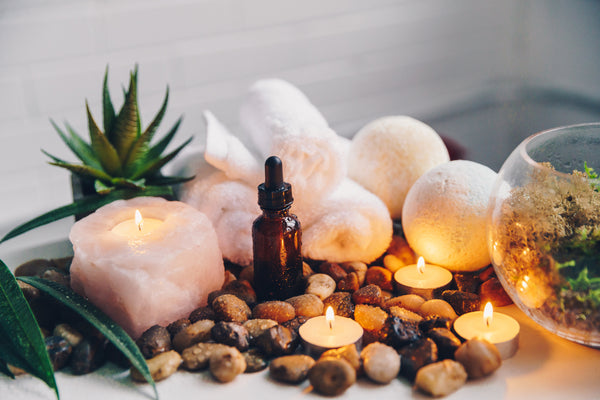
Which scents can I use?
When using essential oils for candle-making you have many different oils and combinations to choose from. Whether you wish to use bright, citrusy scents for summer or smoky, woodsy scents for autumn, your options are endless. Let’s take a closer look at the different categories of fragrances to give you a better idea of where to begin.
- Camphorous: pungent, sharp scent: eucalyptus, pine needle, tea tree
- Citrus: fresh, crisp: grapefruit, lemon, lime, orange
- Floral: flowery: jasmine, lavender, rose
- Herbal: intense and herbaceous: basil, rosemary, clary sage
- Mint: cool, fresh: peppermint
- Resinous: earthy scent: frankincense, myrrh
- Spicy: sharp and strong: black pepper, cinnamon, clove
- Woodsy: freshly cut wood: cedar, cypress, sandalwood
Beside the "classic" essential oils you can also experiment with Aroma oils. With such oils you can add for example some berry or fruity scents. You could try Apple, Cherry, Coconut or Vanilla for the beginning.
Scent Notes
Perfumers divide essential oil scents into categories which they refer to as notes:
- Top notes smell light, fresh, and airy. They are normally the first scent noticeable, but also dissipate the quickest—usually within five to fifteen minutes.
- Heart notes make up around 70% of a fragrance. They are noticeable as the top notes wear off, and are usually strong and aromatic.
- Base notes add depth to a fragrance and can linger for longer than six hours. Popular choices of base notes include woodsy scents like cedar and sandalwood, or even vanilla and patchouli.
When you are creating a blend it is important to incorporate all three types of oils to create an aromatic, long-lasting fragrance. Keep in mind that the oil blend will merge and alter as it matures. If you are not certain about a blend, allow it to age for a day or two and smell it again.

Things you should know about blending
You don't need to be an expert to create your own blends. Blend recipies could be a helpful start, but most important you just need to know which scents you prefer. Don't worry to create your own blends. One great thing about making your own blends is that there will be endless new combinations to try as you gain more experience.
When blending essential oils, you will first need a clean glass bottle:
- Select the oils you want to blend. There are no rules about how many oils should be in a blend, however, using three to four oils is a good start.
- put some drops of each oil in the glass bottle.
- Shake the bottle and test your results.
- Add more drops of oil and repeat the previous steps till you get the desired scent.
How much oil should I use?
Generally speaking, the amount of fragrance should be not more than 10% of the total volume of wax. 5% is a good amount for making scented candles. Soy wax tends to need a bit more scent, so keep this in mind and add a few more drops when using soy wax.
How to mix essential oils and wax?
The melting and pouring temperatures of wax varies and depends on the type. Thats why it is important to keep a thermometer on hand to monitor the temperature. If you do not mix your essential oils at the right temperature, they may not be as fragrant as they could be.
For paraffin wax, melt it till it reaches about 80°C - 85°C. Add in the essential oils and, if you like, the color at the same temperature. Pour it into candle molds or containers when it cools to 70°C-75°C.
For soy wax, heat it till it reaches 80°C - 85°C, then mix in your favorite scents and colors. Let it cool till 60°C- 70°C before pouring.
For palm wax, the melting temperature is a bit higher. Wait until it reaches 95°C-100°C, then mix your fragrance as soon as possible. Pour the wax into the container right away to avoid the essential oils evaporating during the mixing process!
Which wicks should I use?
It is important to choose the correct type of wick for the candle you wish to make. Neglecting this may result in improper burning. Often a poorly burning candle is simply due to selecting the wrong wick. To achieve consistent results, keep notes and document what works best in the various candles you create.
The four basic types of wicks are:
- Flat-braided wicks are best when making dipped taper candles.
- Paper-core wicks are best for container candles, votives, and tea lights. However, they have a tendency to smoke more than other wicks.
- Square-braided wicks are sturdier than flat-braided wicks and are for use in pillar candles.
- Wire-core wicks are primarily used for container candles and tea lights. Some wire-core wicks come pre-tabbed and need only be anchored to the bottom of the mold or container.
The diameter and length of the wick are best determined using the size of the candle. The type of wax being used is also a factor. Long-burning wax, such as beeswax or paraffin, will require a larger-sized wick. Recommendations suggest using a small wick for candles up to 5 cm in diameter, a medium wick for up to 7 cm candles and a large wick for up to 10 cm candles.
Determine the length of the wick by measuring the height of the mold and adding 5 cm. In some cases, you may wish to leave a longer wick for decorative purposes.
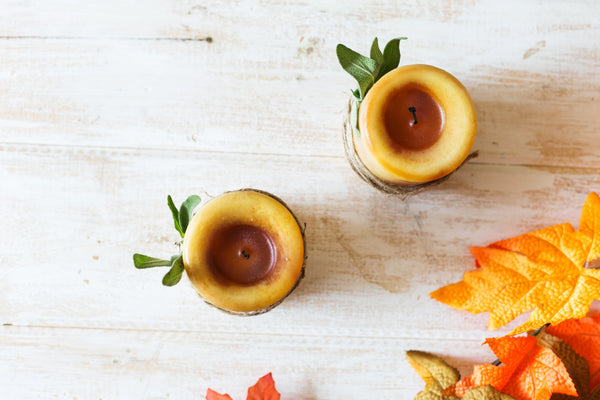
Which oils are the best for candle making?
As said before, there is no limitation on which oils you can use for your candles. If you need some inspirations, the following oils would make a good start:
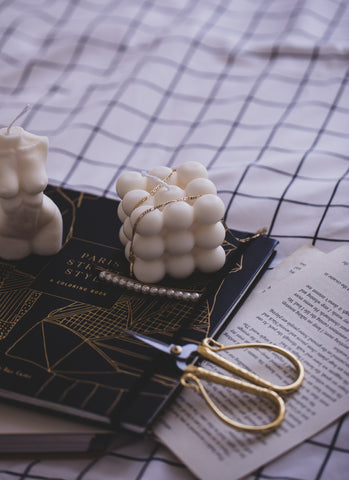
- Lavender
- Rosemary
- Freesia
- Bergamot
- Cinnamon
- Orange
What else should I know?
- Candles should always be left to cure at least 24-48 hours before lighting.
- Always melt wax in a double boiler or water bath. Never melt the wax directly, and never leave it unattended! Wax will self-ignite if overheated!
- Do not extinguish burning wax with water! Instead, smother the flames with baking soda, a towel, a lid, or a blanket.
- Always clean up spills as they happen. Melted wax collecting in the proximity of a burner is a fire hazard!
- Never pour wax down a drain because it will clog!
- If hot wax spills on the skin, do not wipe it off. Rinse the skin under cold water and allow the wax to harden, then scrape it off.
- Use pots and containers that are only for candle making. Keep these items away from food usage.
- Wax residues can be removed by placing the container in the freezer until the wax becomes hard and easy to peel away.
- Save all candle leftovers because they are valuable raw materials and can be used again.
- Always be aware of flowers, ribbons, and other decorative items that are in close proximity to a candle flame. Never leave a candle unattended!
